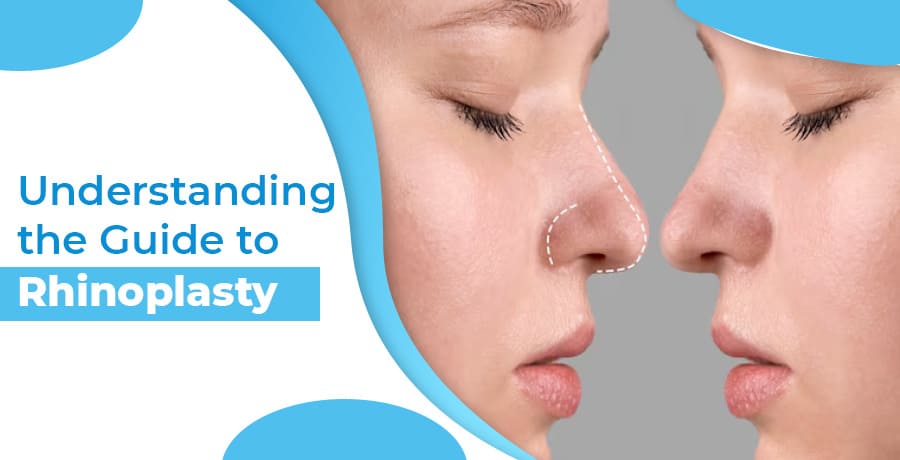
Rhinoplasty, popularly termed a "nose job," is one of the most aesthetic cosmetic surgeries. The purpose of the operation is to reshape the nose for aesthetic and/or medical purposes. Whether for enhancing facial harmony, correcting breathing problems, or repairing trauma-related defects, rhinoplasty has inspired many patients to live a more confident and comfortable life.
Rhinoplasty is a surgery for changing the shape, size, or function of the nose. It can be done for beautifying the nose or for medical purposes, such as for correcting a deviated septum causing difficulty in breathing. It may involve changes to bone, cartilage, skin, or combinations thereof. Depending on the desired effects, the surgeon will remove, reshape, or augment selected nasal structures.
Types of Rhinoplasty
1. Cosmetic Rhinoplasty
As the name suggests, this type of rhinoplasty makes your nose appear better. It can help with the following:
- A hump on the bridge of your nose
- A bulbous or drooping nasal tip
- Asymmetry
- An overly or underly protruding nose compared to the face
2. Functional Rhinoplasty
Functional rhinoplasty is conducted to correct the structural abnormality where breathing is hampered. Common causes include:
- Deviated septum
- Enlarged turbinates
- Collapse of nasal valve
3. Reconstructive Rhinoplasty
This surgery is done in the case of patients who had any kind of nose trauma due to accidents, burns, or previous surgery and aims at restoring function and appearance.
4. Revision Rhinoplasty
Sometimes, a patient does not get happy results out of their previous surgery on the nose. Revision rhinoplasty will correct all imperfections and functional problems resulting from past surgery.
Consultation and Preoperative Planning
Patients considering rhinoplasty will have a consultation with a qualified plastic surgeon. The purpose of the consultation includes the following:
- The Assessment of the patient's nose concerning the face as a whole.
- Consideration of aesthetic objectives along with other medical concerns.
- Explanation of methods, risks, and outcomes of surgery.
Surgical Techniques
Two forms of Adverse Effects in Rhinoplasty are:
- Open Technique Rhinoplasty: The surgeon makes an incision across the columella, the tissue between the nostrils, to access nasal structures. This method allows the surgeon much-improved access and gives him greater visibility and precision.
- Closed Rhinoplasty: Making incisions from the inside of the nostrils, this method is least invasive, and leaves no visible scars. The process is preferred for smaller changes, however.
The average duration of rhinoplasty is between 1 and 3 hours: depending upon the complexity of the case and whether it is also under general or local anaesthesia with sedation, the actual procedure for it is being done. Rhinoplasty recovery varies with each person and the extent of surgery carried out. Here is a rough schedule of what to expect:
1st Week-Immediate Recovery
- Moderate swelling, bruising, and a little soreness may occur.
- Nasal splints are usually worn for 1 week.
- Avoid all strenuous activity.
Weeks 2 to 4-Reduced Swelling
- Swelling and bruising have pretty much worn off.
- Patients can return to pretty much all normal daily activities, but heavy exercise is still discouraged.
Months 1 to 6-Period of Refinement
- The nose continues to heal, and slight improvements become noticeable.
- Swelling may persist for a few months but fades eventually.
A year and more
- Final contours of the nose are often seen, one year after all swelling has disappeared.
- Potential Risks and Complications
Rhinoplasty, like any surgery, carries some risks, which include:
- Infection
- Bleeding
- Breathing difficulty
- Unsatisfactory aesthetic outcome
- Scarring (especially with open rhinoplasty)
- Need for revision surgery
- Cochrane review
These risks can be minimized with the careful selection of an experienced and board-certified and the best cosmetic surgeon in Delhi, Dr. Anup Dhir.
Advantages of Rhinoplasty
The following are the principal advantages of rhinoplasty:
- Enhancement of facial balance and harmony
- Improved self-confidence and appearance satisfaction
- Improved nasal airflow (for structural issues in the nose)
- Restoration of congenital imperfections or trauma-related deformity
Rhinoplasty is a highly customisable procedure that can achieve both cosmetic and functional outcomes. Whenever you are having surgery for cosmetic or medical reasons, being treated by a highly skilled plastic surgeon ensures that you have the best opportunity at a successful outcome. Understanding the whole process, the recovery, and potential risks will help you make an informed decision about this life-transforming procedure. To gather more information, book an appointment with Dr. Anup Dhir today.

